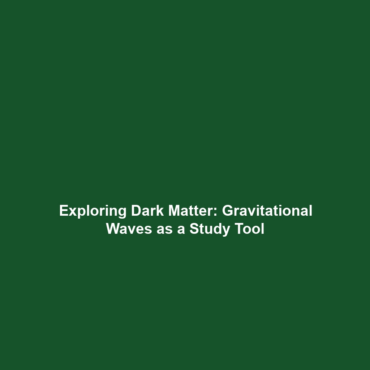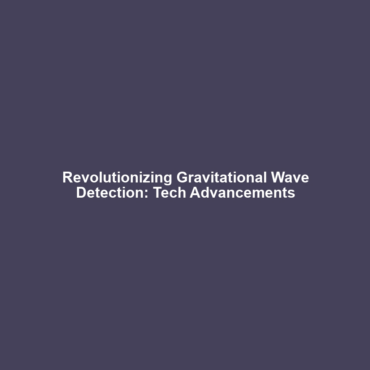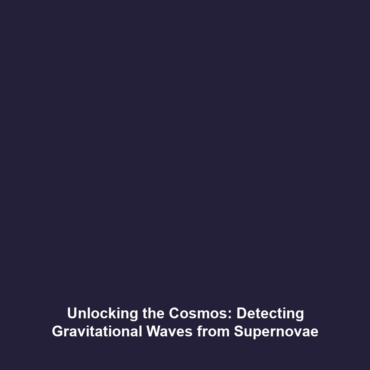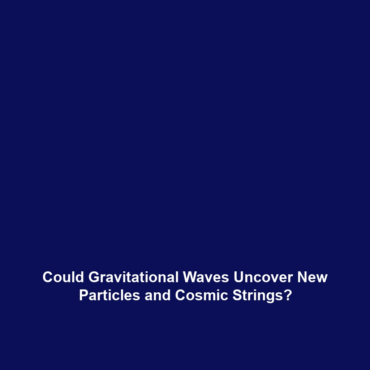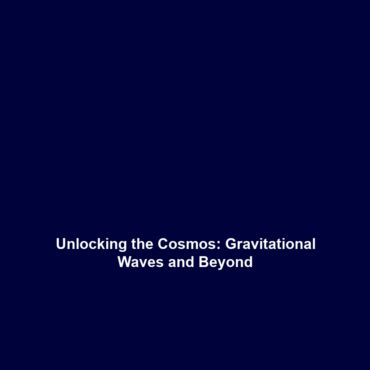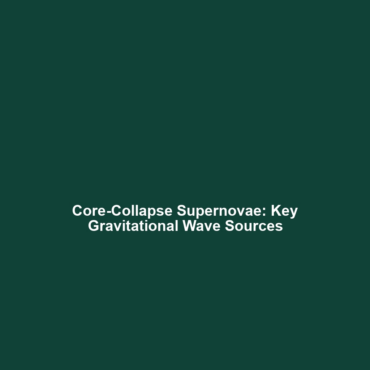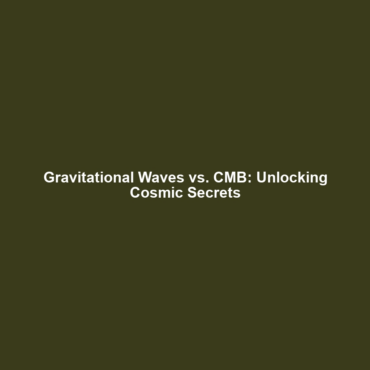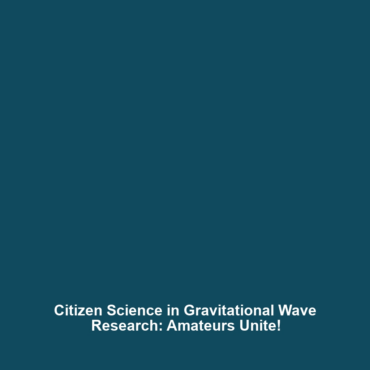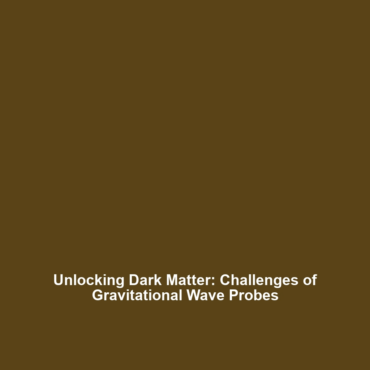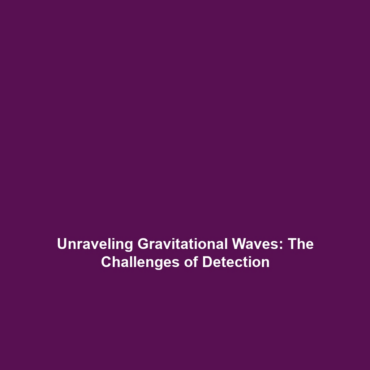Dark Matter and Gravitational Waves: The Potential to Use Gravitational Waves to Study Dark Matter
Dark matter continues to elude direct detection, yet its presence is pivotal to our understanding of the universe’s structure and evolution. Recent advancements in gravitational wave astronomy present an exciting opportunity to observe this enigmatic substance indirectly. This article discusses how gravitational waves may be harnessed to study dark matter, placing this research within the broader context of gravitational waves as a revolutionary tool in modern astrophysics.
Key Concepts
Understanding the intersection of dark matter and gravitational waves requires familiarity with several key concepts:
What is Dark Matter?
Dark matter is a theoretical form of matter that constitutes approximately 27% of the universe. Unlike normal matter, dark matter does not emit light or energy, making it invisible and detectable only through its gravitational effects on visible matter. This has led to numerous hypotheses about its composition and properties.
What are Gravitational Waves?
Gravitational waves are ripples in spacetime caused by accelerated massive objects, such as merging black holes or neutron stars. First detected by the LIGO observatory in 2015, these waves offer a novel method for exploring cosmic events and testing general relativity, as well as potential insights into dark matter interactions.
Applications and Real-World Uses
The potential applications of utilizing gravitational waves to study dark matter are expansive:
- Understanding Cosmic Structure: Gravitational waves can provide data about the distribution of dark matter in galaxies, helping to refine models of cosmic evolution.
- Probing Dark Matter Candidates: Gravitational wave events may indicate the presence of primordial black holes, a hypothesized component of dark matter.
- Enhanced Phenomenological Models: Combining gravitational wave data with cosmic microwave background studies could yield clearer insights into dark matter properties.
Current Challenges
Despite the promise of this interdisciplinary approach, several challenges persist:
- Detection Sensitivity: The faint nature of gravitational waves complicates their detection and necessitates advanced instrumentation.
- Theoretical Models: Current models of dark matter interactions must be refined to accommodate insights gained from gravitational wave observations.
- Data Analysis Complexity: The interpretation of gravitational wave data is inherently complex and requires robust analytical frameworks.
Future Research and Innovations
The future of studying dark matter through gravitational waves is promising, with several exciting research avenues on the horizon:
- Next-Generation Detectors: Upcoming observatories such as LIGO and Virgo upgrades, and the introduction of space-based detectors like LISA, will enhance our sensitivity to gravitational waves.
- Multi-Messenger Astronomy: The integration of gravitational wave data with electromagnetic observations could unlock new pathways for dark matter research.
- Framework Development: Emerging computational models will facilitate the correlation of gravitational wave signatures with dark matter characteristics.
Conclusion
The exploration of dark matter using gravitational waves represents a frontier in contemporary astrophysics that holds the potential to transform our understanding of the universe. Continued research and collaboration across disciplines could lead to significant breakthroughs in both the detection of gravitational waves and the study of dark matter. For further reading, explore our articles on Astrophysics and Cosmology.
